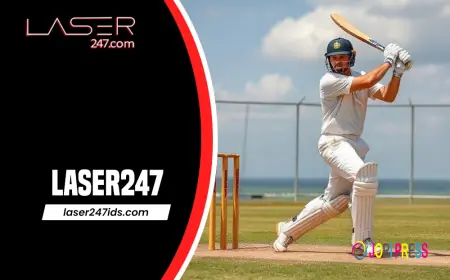Golf Rangefinder: The Precision Tool
A golf rangefinder is typically a handheld optical device that uses a laser to measure distances. When you aim it at a target, it sends out an invisible laser pulse and calculates the time it takes for the pulse to reflect back. This "time of flight" measurement is then converted into a highly accurate distance.Choosing between a golf rangefinder and a GPS watch is a key decision for golfers looking to get precise distances on the course. Both devices have distinct advantages and disadvantages, catering to different playing styles and preferences. While a rangefinder offers pinpoint accuracy to any visible target, a GPS watch provides convenient, hands-free data for overall course management. Understanding these differences is crucial for picking the right tool to enhance your game.
How a Golf Rangefinder Works
Imagine pointing a tiny, invisible flashlight at the flagstick. The light travels to the flag, bounces off, and returns to your device. The rangefinder precisely measures the minuscule amount of time this round trip takes. Since the speed of light is constant, the device uses this time to calculate the exact distance between you and the flag. This method allows for incredible accuracy, often within a yard or even a fraction of a yard.
Pros of a Golf Rangefinder
-
Pinpoint Accuracy: This is the undisputed champion of accuracy. A laser rangefinder gives you the exact distance to any visible target you aim at, be it the flagstick, the front or back of a bunker, a specific tree, or even another golfer's ball. This precise measurement is crucial for dialing in your club selection, especially when the pin is tucked in a difficult spot.
-
Target Specificity: You dictate what you want to measure. Want to know the carry distance over the water hazard? Point and shoot. Need the exact yardage to the flag, no matter if it's front, middle, or back? A rangefinder gives you that precise number.
-
No Course Downloads or Subscriptions: Rangefinders work independently of pre-loaded course maps. This means they work on any golf course in the world right out of the box, with no need for updates, downloads, or recurring subscription fees.
-
Slope Compensation (with Tournament Mode): Many modern rangefinders include a "slope" feature that adjusts the distance based on elevation changes. If you're hitting uphill, it tells you how much longer the shot will "play," and shorter for downhill shots. This is a game-changer for hilly courses. Critically, these devices usually have a simple switch or button to disable the slope feature, making them legal for most tournament play.
-
Hazard Measurement: They are excellent for precisely measuring distances to the nearest and furthest edges of hazards, helping you plan your layups or carries with confidence.
-
Tactile Feedback: Many advanced models offer vibration feedback (often called "Jolt" or "PinSeeker" technology) when they successfully lock onto the flagstick, confirming you've got the right target.
-
Durability and Battery Life: Rangefinders are built to be robust and typically use long-lasting, easily replaceable batteries that can last for dozens of rounds.
Cons of a Golf Rangefinder
-
Requires Line of Sight: If you can't see your target (e.g., on a blind shot over a hill, or if a large tree is in the way), a rangefinder won't be able to give you a reading.
-
Can Be Tricky to Use for Some: Holding the device steady and aiming at a small target like a flagstick, especially at long distances, can take practice. Golfers with shaky hands might find this challenging, though image stabilization features help.
-
No Course Overview: A rangefinder doesn't provide a map of the hole, an overview of unseen hazards, or the general layout of an unfamiliar course. It's purely about direct distance measurement.
-
Can Potentially Slow Play: For some, constantly pulling out the device, aiming, and shooting for every shot might add a slight delay to their routine compared to a quick glance at a watch.
GPS Watch: Convenience on Your Wrist ⌚
A GPS golf watch uses satellite technology to determine your exact location on the golf course. It then accesses pre-loaded course maps to provide distances to various key points like the front, middle, and back of the green, as well as to hazards.
How a GPS Watch Works
A GPS watch contains a receiver that communicates with a network of satellites orbiting the Earth. By receiving signals from multiple satellites, the watch can pinpoint its own precise location on the planet. This location data is then cross-referenced with pre-loaded digital maps of golf courses. Based on where you are on the course, the watch's software calculates and displays distances to various mapped points, such as the center of the green, the front edge of a bunker, or a layup area.
Pros of a GPS Watch
-
Convenience and Speed: Distances are literally a glance away on your wrist. There's no need to pull anything out, aim, or steady your hand. This makes for a very quick and seamless way to get distances, significantly improving pace of play.
-
Course Overview and Context: Most GPS watches provide a visual representation of the hole, showing the layout, hazard locations (even unseen ones), and sometimes even doglegs or layup zones. This is incredibly useful for course management, especially on unfamiliar courses.
-
Distances to Front, Middle, and Back of Green: They typically provide these three key distances, which is sufficient for many golfers who aren't always aiming for the precise pin location.
-
Blind Shots: Since they don't require line of sight, GPS watches are excellent for getting distances on blind shots where the green or a hazard isn't visible from your position.
-
Additional Features: Many GPS watches offer a wealth of extra functionalities beyond just distances. These can include shot tracking, scorekeeping, stat analysis (fairways hit, putts per round), fitness tracking, and even smartphone notifications. Some higher-end models allow you to manually move the pin position on the green for more accurate readings.
-
Hands-Free Operation: Being worn on the wrist, it leaves your hands free for other tasks or simply to keep your rhythm.
Cons of a GPS Watch
-
Less Precise for Pin Location: While accurate to within a few yards, GPS watches generally cannot provide the exact, specific distance to the pin's precise location, especially if it's placed at the very front or back of a large green. They typically default to the center of the green, or offer front/middle/back distances.
-
Reliance on Course Maps: Accuracy depends on the quality and recency of the pre-loaded course maps. If a course has undergone significant changes (new bunkers, redesigned greens), the watch's data might be outdated until an update is available.
-
Battery Life: GPS watches typically need to be charged more frequently than rangefinders, often after every 1-2 rounds of golf, due to their constant use of GPS signals and display.
-
Potential for Signal Issues: Accuracy can be affected by poor satellite reception, heavy tree cover, or tall buildings, though modern GPS chips are highly robust.
-
Possible Subscription Fees: While many brands offer free course updates, some may charge subscriptions for premium features or access to a wider global course database.
Which is Right for You? ?
The ultimate decision between a golf rangefinder and a GPS watch hinges on your personal golfing priorities:
-
Choose a Golf Rangefinder if:
-
Pinpoint accuracy to the flag is your top priority.
-
You frequently play on hilly courses and want "plays-like" distances (with the slope feature).
-
You prefer to measure any specific target on the course (e.g., specific bunker lips, trees).
-
You don't want to worry about course map updates or subscriptions.
-
You have a steady hand and are comfortable aiming the device.
-
-
Choose a GPS Watch if:
-
Convenience and speed are paramount – you want distances with a quick glance.
-
You value a visual overview of the hole and unseen hazards.
-
You often play blind shots where a laser would be useless.
-
You're happy with front, middle, and back of the green distances.
-
You appreciate additional features like shot tracking, scorekeeping, or fitness monitoring.
-
You prefer a hands-free experience while playing.
-
-
Consider Both if:
-
You're a serious golfer who wants the best of both worlds – the pinpoint accuracy of a laser for approach shots and the convenience and course overview of a GPS watch for overall strategy. Many tour professionals and advanced amateurs use this combination.
-
FAQs: Golf Rangefinder vs. GPS Watch
Q1: Is a laser rangefinder truly more accurate than a GPS watch?
A1: Yes, generally, a laser rangefinder provides superior pinpoint accuracy for specific targets. It measures the exact distance to the object you aim at (e.g., the flagstick), often to within a yard or even a tenth of a yard. GPS watches, while accurate for general distances (front, middle, back of green), typically have a margin of error of a few yards and rely on pre-mapped data.
Q2: Can I use both a golf rangefinder and a GPS watch in the same round?
A2: Absolutely! Many golfers find this combination ideal. You can use the GPS watch for quick, overall distances to the green and hazards, and then pull out the laser rangefinder for the precise distance to the flag or to carry a specific part of a hazard when accuracy is critical.
Q3: Are rangefinders and GPS watches allowed in golf tournaments?
A3: Generally, yes, but with important conditions. The rules (like those from the USGA and R&A) allow distance-measuring devices (DMDs) provided they only measure distance. If a device has features that measure or gauge other conditions affecting play (like slope compensation, wind speed, or club recommendations), those specific features must be disabled for the device to be legal in most competitive play. Always check the specific local rules of the tournament you are playing in.
Q4: Which is better for a beginner: a rangefinder or a GPS watch?
A4: For beginners, a GPS watch can often be more user-friendly. It provides instant, hands-free distances to the front, middle, and back of the green, plus a helpful visual overview of the hole, which can aid in course management. Laser rangefinders, while highly accurate, require a bit more practice to aim steadily and quickly. However, a basic, simple-to-use rangefinder is also a great starting point for anyone serious about improving.
Q5: Do GPS watches require a subscription for course maps?
A5: It varies by brand and model. Many popular GPS watches, especially from leading brands, come with a vast database of pre-loaded courses worldwide and offer free lifetime updates, meaning no subscription is required. However, some lesser-known brands or premium features might involve a subscription for comprehensive course access or advanced functionalities. It's crucial to verify this before purchasing.
Q6: What if my golf course isn't mapped on my GPS watch?
A6: Most major GPS watch brands have extensive databases covering tens of thousands of courses globally, so it's quite rare for a recognized course not to be included. If a course is missing, some brands offer options to request new course mappings or allow users to contribute data. A laser rangefinder, by contrast, doesn't rely on pre-mapped courses, so it will always work on any course where you have a clear line of sight.
Q7: Can a golf rangefinder help with the pace of play?
A7: Yes, both rangefinders and GPS watches can significantly improve the pace of play. By providing instant, accurate distances, they eliminate the need for guessing, pacing off yardages, or searching for sprinkler heads, allowing golfers to make quicker club selections and keep the game moving.
What's Your Reaction?
 Like
0
Like
0
 Dislike
0
Dislike
0
 Love
0
Love
0
 Funny
0
Funny
0
 Angry
0
Angry
0
 Sad
0
Sad
0
 Wow
0
Wow
0


















































